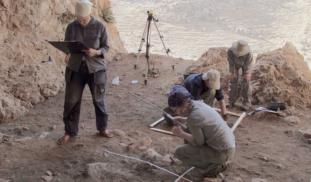Please wait...
About This Project
Hunter-gatherers repeatedly visited the Mughr el-Hamamah site, Jordan, ca. 45-40,000 years ago. Then, anatomically modern humans were replacing Neanderthals across western Eurasia. We will carefully excavate the very well-preserved plant remains and other artifacts in the cave. With a high-resolution view of human activity at this key prehistoric juncture, we seek to answer how groups foraged and provisioned diverse foods and materials beyond camp, while they worked, ate, and slept in camp.






